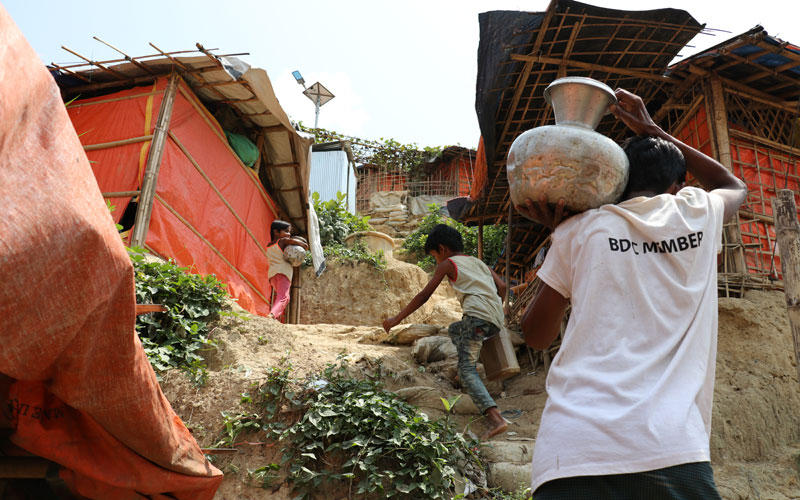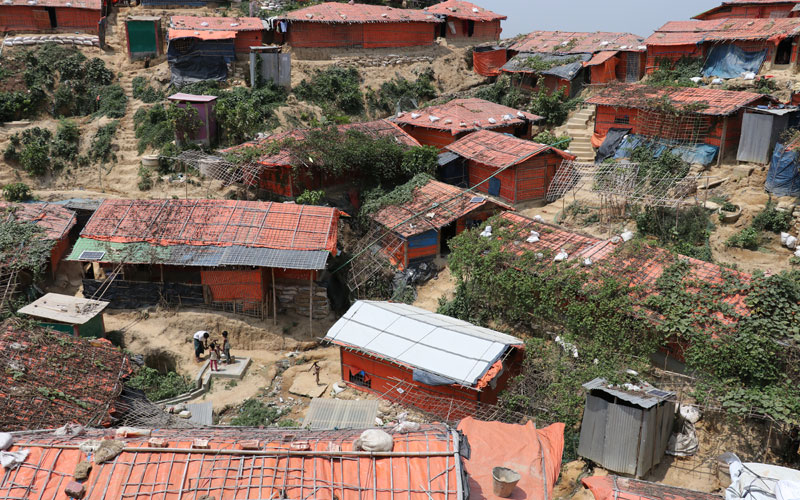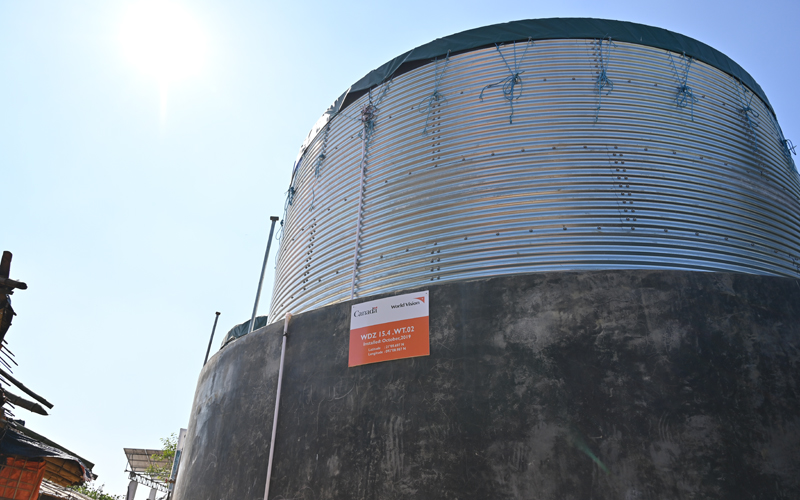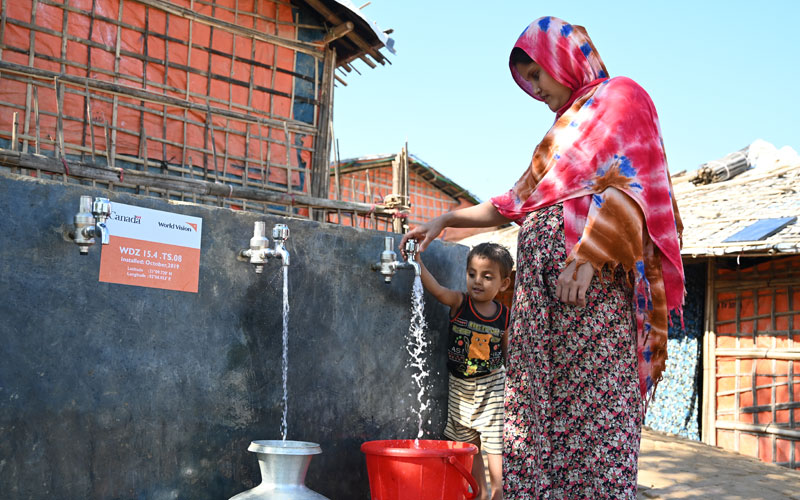In the world’s largest refugee camp in southern Bangladesh, home to almost 1 million Rohingya, parents struggle daily to have enough clean water for their children to drink and wash their hands.
A new innovative solar-powered water network funded by Global Affairs Canada and installed by World Vision is changing that grim reality, providing clean drinkable water to 5,000 refugees daily in Camp 15 and in neighbouring host communities.
This innovation couldn’t have come at a better time, with
the recent outbreak of COVID-19. Life in large, overcrowded refugee camps brings higher risk when there’s a lack of clean water and sanitation, and limited access to medical care.
“We had great difficulties to get water in the past,” recalls Shahanara, a 25-year-old Rohingya mother of three young children. “My husband and children had to climb up the steep hills to our home several times a day after collecting water from a tube well pump in a valley.”
 Photo: Himaloy Joseph Mree
Photo: Himaloy Joseph Mree
According to international humanitarian standards, refugees need at least 15-20 litres of water per day per person for drinking, bathing and household needs. This means Shahanara and her family had to haul between 75-100 litres of water uphill every day to satisfy the basic needs of their family of five. The heavy traditional aluminium water jars that the Rohingya use hold up to 14 litres of water. They weigh more than 15 kg when full.
Water shortages forced refugees to choose between cooking and bathing. “Before we only bathed once or twice a week and rarely washed our clothes,” says Shahanara.
In Rohingya culture, fetching water is usually women’s work—and it’s often risky. Women report being harassed when going to collect water. “The area around the tube wells is crowded and many men are around. Girls feel insecure and uneasy about going there,” explains Shahanara.
Providing enough clean water for 1 million people is no easy task. One major concern is preventing the spread of COVID-19 and other epidemics caused by water-borne diseases.
 Photo: Himaloy Joseph Mree
Photo: Himaloy Joseph Mree
When 740,000 Rohingya refugees from Myanmar began pouring into Bangadesh in August 2017, World Vision and other agencies rushed to provide water in the makeshift camps. They installed thousands of tube wells in a short time. But sustaining water quality while protecting the water table levels quickly became a problem. Many of the shallow tube wells often became contaminated.
To address the water crisis in Camp 15, World Vision embarked on an ambitious engineering project to deliver fresh water to the doorsteps of 1,000 Rohingya families. Thirty-two families in host communities would also benefit from the new water network.
 Photo: Himaloy Joseph Mree
Photo: Himaloy Joseph Mree
“Constructing such a large water network was something new for the community and for contractors as well,” says Gunjan Gautam, World Vision’s WASH Manager. An engineer by profession, he supervised the challenging year-long project.
Gunjan says it took time to get the many stakeholders—including camp officials and refugees—on board. “We needed a place to put the boreholes, water tanks and solar panels,” he explains. “We had to convince three families to shift their shelters several metres to make room, and that wasn’t easy.”
World Vision installed two 250-metre deep boreholes on one of the highest hills in the camp. The water is purified by an automated chlorine dosing system and stored in two tanks that hold up to 190,000 litres.
“There’s no electricity in the camps, but we do have 12 hours of sunshine for most of the year,” says Gunjan. “So, we use solar power to pump the water from the boreholes to the tanks and out to the community. It’s economical for long term operation and maintenance.”
 Photo: Himaloy Joseph Mree
Photo: Himaloy Joseph Mree
Fifty-six solar panels (each one 310 watts) generate eight kilowatts of electricity daily—enough to run the motorized pumps that distribute water to 30 tap stands via a 3,055-metre pipe network.
Rohingya families now have enough fresh water available nearby 24 hours a day.
“We have easy access to clean water right near our house,” says Shahanara. “This is really good for my children. They have enough safe water to drink. Now we can take a bath every day and wash our dirty clothes and bed sheets every week.”
Shahanara says the water network has also solved some of the security problems for women and girls. “Adolescent girls can easily collect water now,” she says. “The tap stands are close to their shelters and so they feel safer.’’
 Photo: Himaloy Joseph Mree
Photo: Himaloy Joseph Mree
Shahanara conveys her thanks to Canadians for the water network that has improved conditions for her family and her community. “Thanks to you, we have water now,” she says. “You have a place in heaven for what you have done.”